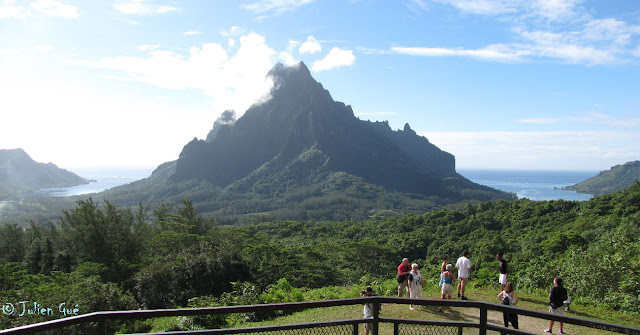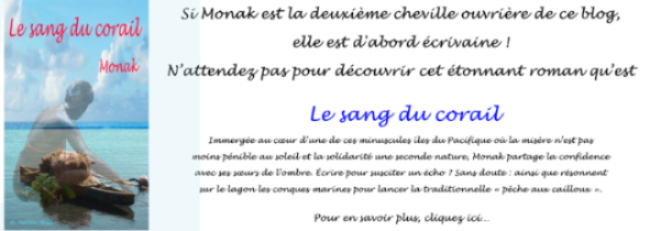Five little-known islands, including Tahiti
Compound of five islands, including Tahiti and Moorea,
the subset of Winward Islands alone hosts 75% of the population of French
Polynesia.
The four high islands (Tahiti,
Moorea, Maiao and Mehetia) and the atoll (Tetiaroa) form a remarkable insular
entity in French Polynesia, integrated in Society Islands.
While these five islands are home
to three quarters of the population of the five Polynesian archipelagos, one
(Mehetia) is uninhabited since the early 20th century, the other
(Tetiaroa), which belonged to Marlon Brando, became a hotel reserved for an
extremely wealthy clientele and the third (Maiao) is inhabited by only three
hundred people.
 |
| Winward Islands, Society Islands |
In other
words, on the only two islands of Tahiti and Moorea three quarter of the
Polynesian population reside.
Another
feature: with 1193 square kilometers, the global area of these five islands
constitutes more than a quarter of the total area of land masses of French
Polynesia (4200 km²). with 1193 square kilometers, the total area of these
five islands more than a quarter of the total area of land masses of FrenchPolynesia (4200 km²).
Lastly, one
more point: on Tahiti island are located the highest tops of these one hundred
and eighteen islands.
Tetiaroa atoll (17 ° 0 '0' 'S - 149 ° 34' 0 '' W)
At only 53 km north of Tahiti,
the (private) atoll Tetiaroa offers 6 km² land area enclosing one of the most
beautiful closed lagoons of French Polynesia.
 |
| Tetiaroa, an atoll seriously threatened by a luxury hotel... |
The highlight of the island is 17
meters above the level of the sea.
Long a sacred land for the
Tahitians and tabu* property of the
royal family of Arue town, Tetiaroa was mostly made famous for being the
property of the actor Marlon Brando, who lived there from 1967-1990.
Even today, Tetiaroa presents a remarkable ecosystem and
particularly well preserved. Many species of birds have made their refuge, but
for how much longer?
 |
| From now on, we must be very, very rich to enjoy it... |
Indeed, although still owned by the heirs of the actor, it's the hotel society, Pacific Beachcomber, which there is currently making a very important (and very controversial) luxury hotel project.
The desert island Mehetia (17 ° 52 '30' 'S - 148 ° 4' 03 '' W)
Located a hundred kilometers east
of Tahiti, Mehetia is, geologically, the youngest of five islands in the group.
The last eruption of the volcano (still active) was held from March 5 to
December 1981.
 |
| Mehetia, an island that was not always a desert... |
Covering an area of 2.3 km²,
the island, particularly steep and devoid of lagoon, rises to 435 meters above
sea level, at Mount Fareura.
It is attached administratively
to the municipality of Taiarapu-Est, located at Tahiti Iti, Tahiti's peninsula.
 |
| A volcano which still spewed fire in 1981... |
If Mehetia is deserted since the
early 20th century, it was a long time dynamic economic hub because it served
as a stopover for ships between Tahiti and Tuamotu-Gambier and Austral
archipelagos.
Today it is forbidden without
official access authorization.
The closed Maiao Island (17 ° 39 '19.89' 'S - 150 ° 38' 3.53 '' W)
Just 75 km west of Moorea,
Maiao Island is a unique example in French Polynesia.
 |
| Maiao, the "prohibited" island, seen from the sky |
Indeed, by deliberate choice
of its three hundred inhabitants, it has no runway to accommodate airplanes and
refuses to welcome any tourist for a period more than a few hours. However,
it's essential that he so request and that it's granted for him.
With a total area of 9 square
kilometers, its highest peak rises to 154 meters above the Pacific Ocean and
hasn't a name.
Its lagoon is opened to the
ocean by only one natural channel, deemed very dangerous, and a small
artificial pass, on the opposite side from the island and hollowed only for
passage of canoes and small whalers.
 |
| Many freshwater at Maiao, but alas undrinkable |
The heart of the island is
occupied by two lakes of brackish water: the Lake Rotoiti (at north) and
Rotorahi Lake (east).
The island's economy is based
exclusively on the production of woven leaves of pandanus (used to make the
roof of traditional fare) and copra production.
Moorea, Tahiti's sister island (17 ° 29 '31' 'S - 149 ° 50' 8 '' W)
Located only 17 km northwest
of Tahiti, Moorea covers an area of 133.50 km² and has over 16,200 inhabitants.
 |
| Moorea, a beautiful island and unspoilt |
It bristles with eight
mountains including the highest, Mount Tohiea, reached 1207 m.
It also has two large
sumptuous bays of which, Cook's Bay, is seen by its people as the most
beautiful bay of the world.
The tour of the island is
dotted with many villages stretching along beaches.
Moorea is enclosed by a coral
reef lagoon, it opens onto the ocean with 12 passes, all navigable.
 |
| The beautiful bays of Cook and Opunohu, views from the Belvedere |
If the island's economy is
based on agriculture (it produces most notably pineapples consumed in Polynesia
and home to the only Farm high school of the Country) and tourism, Moorea has
become, in recent years, a luxury suburb for Tahiti. Many daily maritime
shuttles put it a few 35 minutes from Tahiti.
Tahiti, the mythical island (17 ° 31 '12' 'S - 149 ° 33' 36 '' W)
With an area of 1 042 km² and
178 173 inhabitants, Tahiti is by far the largest and most populated of the
islands of French Polynesia.
 |
| Tahiti Iti and Tahiti Nui |
It also possesses, with Mount
Orohena (2 241 m), the highest top of the five archipelagos. Were also there
four more peaks over 1 332 m.
Economic heartbeat of
Polynesia thanks to its port, accommodating oil tankers and container ship, and
its international airport, it's also the political and administrative capital.
 |
| The island's interior, the other face of Tahiti |
If Tahiti made the first explorers
James Cook and Louis Antoine de Bougainville dream, the island has lost many of
its attractions, it is injured by uncontrolled urbanization and an almost total
privatization its coastline.
Its lagoon, itself, suffered
the outrages of all releases of an important population whose wastewaters are
hardly treated.
Winward islands by some screenshots
Mandatory stopover
("airport oblige") for all visitors, Tahiti conceals yet (to anyone
who'll take the trouble to look for them) many treasures.
*tabu or taboo: which means forbidden or banned, actually comes from
the Polynesian word "tapu" of which it's a contemporary deformation.
An article
of Julien Gué
Translated from French by Monak
Copyright
Julien Gué. Ask for the author’s agreement before any reproduction of the
text or the images on Internet or traditional press.



Aucun commentaire :
Enregistrer un commentaire
Cet article vous a fait réagir ? Partagez vos réactions ici :